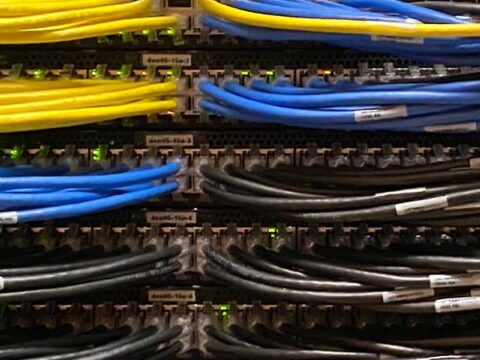Structured Data Cabling and Network Cabling: Key Concepts
 Structured data cabling is a standardized approach to designing and installing cabling systems that support multiple hardware uses and systems within a building or campus. It provides a flexible and organized method for network infrastructure, ensuring efficient data transmission, easier troubleshooting, and scalability for future upgrades. ISI Technology provides network cabling in Colorado Springs, Boulder, Denver, Fort Collins, Littleton, Cheyenne, and surrounding areas.
Structured data cabling is a standardized approach to designing and installing cabling systems that support multiple hardware uses and systems within a building or campus. It provides a flexible and organized method for network infrastructure, ensuring efficient data transmission, easier troubleshooting, and scalability for future upgrades. ISI Technology provides network cabling in Colorado Springs, Boulder, Denver, Fort Collins, Littleton, Cheyenne, and surrounding areas.
At the core, structured cabling consists of subsystems such as horizontal cabling, backbone cabling, telecommunications rooms, work area components, and equipment rooms. The most common type of structured cabling used today is based on twisted pair copper cables (e.g., Cat5e, Cat6, Cat6a, and Cat7), fiber optic cables, and coaxial cables. Each type offers different performance levels in terms of data transfer rates, bandwidth, and maximum cable length.
Network cabling refers specifically to the physical medium used to connect devices in a network, such as computers, switches, routers, and servers. Ethernet cabling is the most widely used network cabling standard, typically involving RJ-45 connectors and Cat5e or Cat6 cables, capable of supporting speeds up to 10 Gbps for Cat6a and beyond. Fiber optic cabling is used for longer distances and higher bandwidth requirements, using light to transmit data with minimal signal loss.
Benefits of structured cabling include simplified network management, reduced downtime, consistent performance, and easier future expansion. A well-designed, structured cabling system prevents tangled cables, supports multiple applications (voice, data, video, security systems), and ensures a clean, professional installation.
Key installation practices involve proper cable routing, separation of power and data cables to avoid interference, labeling of cables for easy identification, and adherence to industry standards like TIA/EIA-568.
In summary, structured data cabling and network cabling are critical for creating efficient, scalable, and reliable network infrastructures. With the growing demand for faster data transmission and higher connectivity, a well-planned cabling system is essential for supporting modern communication and IT needs. Would you like to discuss? Please contact us!











